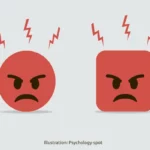
Have you ever wondered why you react the way you do in certain situations or why some decisions are more difficult for you than others? Personality is a sort of fascinating puzzle that manifests itself in each and every one of your actions. Understanding it will not only help you unlock your potential, it will also empower you to make more conscious decisions, achieve your goals and lead a more balanced life aligned with your values.
The theory of the 9 personality enneatypes aims to offer a deeper and more detailed look at your inner world, so that it will not only allow you to identify your behavioral patterns, but also to understand your hidden motivations, desires and fears, so that you can truly develop your best version.
Enneagram: what exactly is it, what is its origin and what does it reveal to you?
Although its origin is not known exactly, the enneagram has ancient roots and draws from various sources. It is believed to have emerged in the Middle East, probably linked to spiritual traditions such as mysticism, Sufism and Judaism.
In the 20th century, figures such as George Gurdjieff and philosopher Oscar Ichazo contributed to its popularization and development, adapting it to become a tool for self-knowledge and personal growth. Later, psychiatrist Claudio Naranjo integrated the enneagram with modern psychological concepts, which facilitated its expansion into the therapeutic and human development field.
Basically, the enneagram is a personality theory that describes nine strategies through which the psyche develops its vision of the world and relates to itself and others.
There are 9 Enneagram types, each with a basic fear, a basic desire, and a pattern of behavior in times of stress and security. This psychological framework shapes the motivations underlying behavior and offers a framework for understanding how we perceive the world and make decisions.
The structure of the enneagram is made up of triads, which are based on the different ways in which we filter our experiences. They are broken down into three basic components of the psyche: instinct, feeling, and thinking.
The Enneagram theory states that your personality is made up of a unique combination of these components. However, it focuses especially on one of these centers (instinctive, emotional or mental), which determines how you think, feel and act.
For example, Enneagram type 2, known as “The Helper” is an intuitive, empathetic and accommodating person, often seen as available and warm, but also easy to manipulate. He strives to “give in order to receive”, so his basic desire is to be loved and his main fear is to be rejected by others.
Being aware of this combination will not only allow you to identify your main Enneagram type and, therefore, your strengths, but also to understand how the other two Enneagram types complement it by adding relevant, although sometimes also contradictory, elements to your personality. In fact, these “wings” often reveal your weaknesses, limits or imbalances. Therefore, they open the door to a deeper and more transformative self-knowledge.
What are the 9 personality enneatypes?
It should be noted that, although the Enneagram theory does not have a solid scientific basis nor has it been exhaustively validated by empirical studies, its popularity has been growing due to its practical usefulness. Many people consider it to be a valuable tool for exploring their thought patterns, emotions and behaviors in order to identify areas with potential for growth and improve their relationships with themselves and others.

Broadly speaking, the 9 personality types of the Enneagram are:
Type 1: The Reformer
- They seek perfection and order.
- They are ethical, organized, conscientious, responsible and committed.
Basic fear: Being corrupt or imperfect.
Basic desire: Being good, whole and balanced.
Key motivation: To be right, improve everything, and avoid mistakes.
Core temptation: To be rigidly self-controlled or overly critical.
Typical vice: Anger (often repressed; turns into resentment).
Typical virtue: Serenity (accepting imperfections).
Focus of attention: What’s wrong and needs correcting.
Type 2: The Helper
- They focus on the needs of others.
- They are loving, generous and seek to be loved.
Basic fear: Being unworthy of love.
Basic desire: To feel loved and appreciated.
Key motivation: To be needed and indispensable to others.
Core temptation: To ignore their own needs to gain approval.
Typical vice: Pride (believing others depend on them).
Typical virtue: Humility (helping without expecting return).
Focus of attention: Others’ needs and emotions.
Type 3: The Achiever
- Success- and image-oriented.
- Ambitious, but also adaptable and focused on achieving their goals.
Basic fear: Being a failure.
Basic desire: To feel worthy and admired.
Key motivation: To be successful, admired, and avoid failure.
Core temptation: To shape their image to gain validation.
Typical vice: Deceit (even self-deceit to maintain image).
Typical virtue: Authenticity (true self over performance).
Focus of attention: Tasks, achievements, and how they are perceived.
Type 4: The Individualist
- Seek authenticity and develop a unique identity.
- Are creative, introspective, and emotionally intense.
Basic fear: Lack of identity or meaning.
Basic desire: To find themselves and be understood.
Key motivation: To express uniqueness and be emotionally honest.
Core temptation: To dwell in melancholy or idealize what’s missing.
Typical vice: Envy (feeling others have what they lack).
Typical virtue: Equanimity (emotional balance).
Focus of attention: What’s missing or lacking in themselves.
Type 5: The Investigator
- Pursue knowledge and strive to understand things.
- Are analytical, observant, and reserved.
Basic fear: Being incapable or incompetent.
Basic desire: To be competent and capable.
Key motivation: To understand the world and avoid intrusion.
Core temptation: To withdraw and overthink instead of engaging.
Typical vice: Avarice (withholding time, energy, or knowledge).
Typical virtue: Non-attachment (sharing freely).
Focus of attention: Gaining knowledge and conserving resources.
Type 6: The Loyalist
- Oriented towards seeking security and support.
- They are loyal, responsible and often cautious.
Basic fear: Lacking support or guidance.
Basic desire: To feel safe and supported.
Key motivation: To gain certainty and be prepared.
Core temptation: To seek reassurance or imagine worst-case scenarios.
Typical vice: Fear (expressed as doubt or suspicion).
Typical virtue: Courage (acting despite fear).
Focus of attention: Potential threats and sources of support.
Type 7: The Enthusiast
- They seek freedom and happiness.
- They are optimistic, spontaneous and fun-loving.
Basic fear: Feeling limited or suffering.
Basic desire: To be happy and fulfilled.
Key motivation: To avoid pain and keep options open.
Core temptation: To escape discomfort through stimulation.
Typical vice: Gluttony (for experiences and excitement).
Typical virtue: Sobriety (being present and content).
Focus of attention: Possibilities, future plans, and pleasure.
Type 8: The Challenger
- They seek control and fairness.
- They are determined, protective and have a strong presence.
Basic fear: Being controlled or vulnerable.
Basic desire: To protect themselves and others.
Key motivation: To be strong, in control, and avoid weakness.
Core temptation: To dominate or confront to feel safe.
Typical vice: Lust (intensity and excess in action or emotion).
Typical virtue: Innocence (strength with compassion).
Focus of attention: Power dynamics and injustices.
Type 9: The Peacemaker
- They seek harmony and inner peace.
- They are calm, accommodating and excellent mediators.
Basic fear: Losing connection or conflict.
Basic desire: To be at peace and balance.
Key motivation: To maintain harmony and avoid tension.
Core temptation: To tune out or minimize problems.
Typical vice: Sloth (psychological inattention to self).
Typical virtue: Engagement (active presence and self-expression).
Focus of attention: Others’ agendas and keeping the peace.
How to know your personality enneatype?
Tools like the Enneagram tritype test offer a deeper and more detailed look at the Enneagram types, as they will not only help you identify your behavioral patterns, but also understand the hidden motivations that push you in one direction or another.
This particular test combines three Enneagram types to create a unique and complete profile. Based on the 27-point personality system created by Katherine Chernick Fauvre, by identifying each of the three centers, it provides a new, more specific focus for you to develop a more complete and nuanced view of your personality.
In fact, this test is particularly interesting on a psychological level because it not only shows the main Enneagram type, but analyzes the wings and percentage of each type. It delves into the possible traumas at the base of the personality, as well as the fears, insecurities and the most likely reactions to stressful situations. It also reflects the main challenges that each Enneagram type faces and outlines strategies to deal with them. As if it were a coach, it provides personalized personal growth recommendations that will help you continue moving forward.
You know your personality type, now what?
Knowing your personality type on the Enneagram is interesting, but what good is it if you don’t apply it? Identifying yourself with a description is not enough: true change occurs when you use that information to evolve. Therefore, you can use the personality type as a compass on your path of personal growth.
1. Identify your defense mechanism and challenge it
Each personality Enneatype has an automatic way of protecting itself from pain (avoidance, repression, control…). Observe yourself when you go into “automatic mode” and do the opposite of what you usually do. If you are a Type 2 and seek external validation when things get difficult, for example, try making a plan and carrying it out without “asking permission” from anyone.
2. Balance your integration and disintegration tendencies
The Enneagram shows which Enneatype you move towards when you are growing or under stress. Use that knowledge as a compass. If you are a Type 9 and you notice that you have gone so far out of control in your search for balance that you have become paralyzed, try to take small steps to get out of the comfort zone in which you have confined yourself.
3. Question your beliefs about what makes you valuable
Each personality Enneatype has a fixed idea of what makes them a valuable person (success, knowledge, being needed…). It is important that you discover it because this belief guides many of your decisions. Therefore, ask yourself: “If I stop doing this, will I still be valuable?” If you are a Type 5 and you believe that you are worth it only because of your knowledge, try to connect emotionally with others without the need to demonstrate how much you know.
4. Apply strategies that counteract your mental fixation
Each personality type has a mental fixation (pride, fear, vanity…) that guides their behavior. Introducing habits that neutralize it is useful to balance your inner life. If you are a Type 1 and tend to want to control everything, for example, it is advisable to focus more on vulnerability: try to ask for help or share your most intimate emotions without feeling that this makes you lose power.
5. Use the enneagram as a tool, not an excuse
Knowing your personality Enneatype is not an excuse to stay stuck in your patterns. Instead of saying “I am like this and I cannot change”, use it as a starting point. Focus on the fears, insecurities or traumas that the enneagram brings to light so that you can overcome them. Use this information constructively to reinforce your weak points, integrate your shadows and balance your personality.
The enneagram is not magic or an exact science, although the truth is that it is being used more and more in different areas, from the detection of psicological risk factors for cardiovascular diseases to mesuring work performance. In fact, it can be a very useful tool if you use it consciously and proactively. The Enneagram Personality Types can be a guide to better understand who you are and how you interact with the world, so that you can work on your less developed areas to enhance your well-being.
References:
Ramos-Vera, C. et. Al. (2022) Enneagram typologies and healthy personality to psychosocial stress: A network approach. Front Psychol; 13:1051271.
Hook, J. N. et. Al. (2021) The Enneagram: A systematic review of the literature and directions for future research.J Clin Psychol; 77(4):865-883.
Alexander, M. & Schnipke, B. (2020) A. The Enneagram: A Primer for Psychiatry Residents. American Journal of Psychiatry Residents’ Journal; 15(3): 10.1176.
Komasi, S. et. Al. (2016) Enneagram Personality System as an Effective Model in Prediction of Risk of Cardiovascular Diseases: A Case-Control Study. Journal of Cardio-Thoracic Medicine; 4(3): 468-473.
Sutton, A. et. Al. (2013) Personality type and work-related outcomes: An exploratory application of the Enneagram model. European Management Journal; 31(3): 234-249.




Leave a Reply